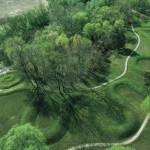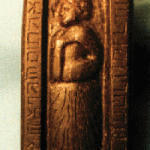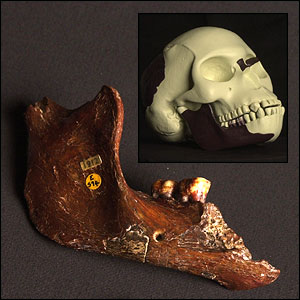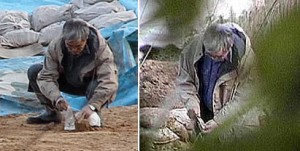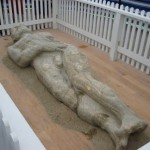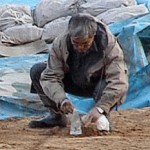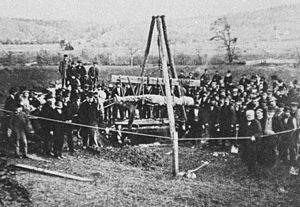Although there is substantial historical, archaeological, and geological evidence that refutes the existence of Atlantis, people continue to search for Atlantis. I think people ignore the abundant evidence because Atlantis has a certain mystique. Like Bigfoot and the Loch Ness monster, people find “evidence” of Atlantis because they want to believe so badly that it does exist. But this is one of the things that separates the science of archaeology from pseudoscience. Archeologists do not work to prove something because seeking a certain outcome, setting out to prove a theory results in bias.
The general public doesn’t care about the archaeological evidence because they don’t understand it. The video we watched in class on Tuesday about Robert Sarmast’s search for Atlantis (skip to 3:15). In his search for Atlantis, Sarmust is extremely excited by the discovery of a wall. This may seem like sufficient evidence for the general public and affirm their faith in Sarmast’s capabilities as an archaeologist, but upon closer inspection we notice that the wall Sarmust finds is completely straight but all the maps of Atlantis, feature curved, semi-circular walls. Sarmast may have found archaeological
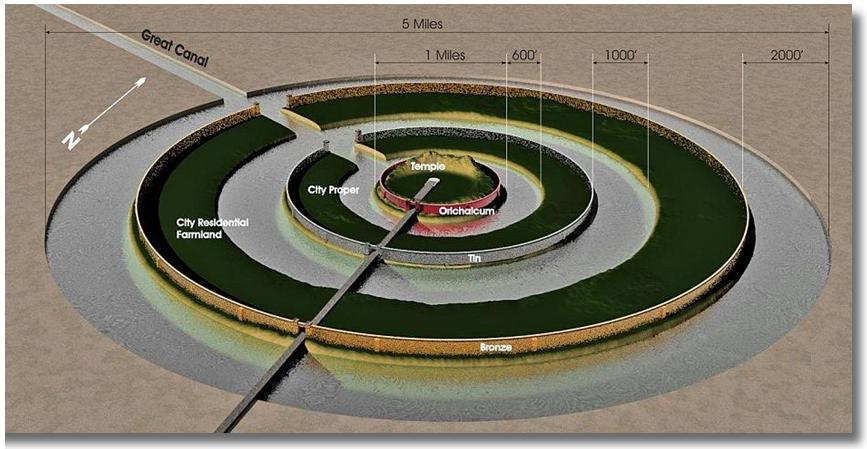
this map of Atlantis features curved, not straight walls
evidence of some feature but there are a lot of straight walls out there to be found, what makes him so positive that this is Atlantis? All other possibilities must be eliminated before Sarmast can truly claim his as Atlantis. Simply finding one wall isn’t good enough, yet this seems to satisfy the general public’s need for evidence. Sarmast’s evidence is similar to Erich von Daniken’s use of irrelevant statistics to prove the existence of prehistoric aliens. In his documentary “Chariots of the Gods” von Daniken provides the viewer with completely irrelevant data, such as the distance of a certain road, or the height of a certain monuments: von Daniken seems to bombard the general public with statistics in order to distract them from the absurdity of his theories.
While the truth of pseudoscientists’ “discoveries” is certainly questionable, this does not stop the general public from playing into the hands of entrepreneurs who take advantage of the general public’s fascination with these theories and discoveries. For example von Daniken’s mystery park is a theme park completely devoted to his theory of ancient aliens (and making money). Entrepreneurs have also profited off of the general public’s fascination with Atlantis by constructing an aquatic themed resort in the Bahamas that invites guests to discover the mysteries of Atlantis.

Guests can pay exorbitant amounts to "discover" Atlantis in the Bahamas
While archaeologists can’t necessarily dissuade the public from believing what they want to believe, the best they can do is to continue to provide actual scientific evidence to refute the ridiculous claims of pseudoarchaeologists like Sarmast and von Daniken.



